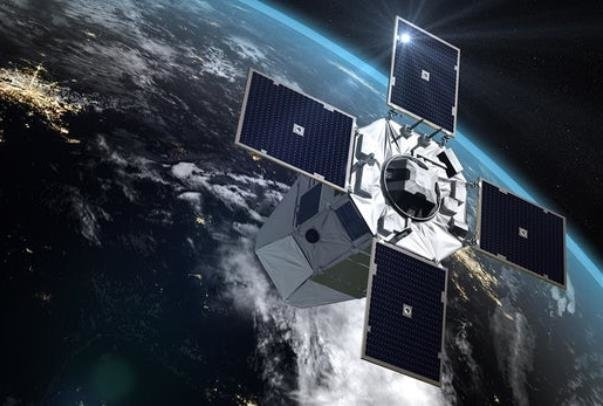Big data is changing the space race in ways that original founders at NASA and other global space exploration organizations never foresaw decades ago. Miriam Kramer, an author with Axios, talked about the growing number of space companies that are finding new ways to utilize big data. They hope new advances in data technology will help them connect with new markets.
While big data can be highly useful for helping space companies grow their market share, they can also use it to operate more reliably. Intel talked in detail about some of these benefits.
Space companies can use data to significantly improve the precision of their photographs. They can use machine learning algorithms with their cameras to take photographs that would have the precision within the tolerance of a meter.
Currently, many satellites are orbiting the earth, at different levels and all performing various jobs. You may have wondered how to get satellites to their destination, or generally how they work, so here’s a bit more information for you. Big data can be highly useful for achieving the following goals with satellites.
The Ultimate Hitchhiker
Satellites are actually hitchhikers. Today, you will find that any satellite that is deployed will take a trip on a rocket to get to its correct position. Historically, cargo bays were also used to transport satellites inside a space shuttle, but since we are not launching as many human-crewed flights anymore, it was felt more appropriate to use a rocket.
This is the biggest benefit of big data. Space companies can use data technology to operate satellites remotely without having to operate them manually. Machine learning can help satellites with everything from conducting fault analysis to creating imagery.
It is not just NASA that has the capabilities for launching rockets into space. There are actually many countries that can do this. So again, who even takes the satellite to space depends on the purpose and who paid for it and commissioned it.
Rockets
When using a rocket to get the satellite into position, there are no people involved in the air, just the ground system. There is a lot of work involved in plotting a course and programming the inertial guidance system, and all of these details will be collated into one document called a flight plan. Rockets go straight up to start with because they need to move quickly through the part of the atmosphere that is the thickest; otherwise, they will burn up too much fuel trying to travel across it. Once they have cleared it, they are able then to start moving it side to side to get it where it needs to go.
Most rockets actually head up and then over to the East because the earth rotation is East, enabling less fuel consumption and a bit of a free ride for the rocket and satellite. Satellites do have their onboard power, but it is for moving small distances and correcting their position rather than the extensive journey to get to their destination. Satellite power tends to come from solar panels and backup batteries, and this would not be sustainable for a whole trip as the position of the sun would not be strong enough to keep the solar panels and the backup batteries charged correctly. When the rocket begins to move, it can be boosted by the rotation of the earth, specifically the equator offering the most significant rotation.
This is another application where big data and machine learning can be very important. Machine learning technology can help rockets navigate trajectories more easily and avoid potential obstacles. They can also help launchpad operators and engineers determine how to operate them more efficiently and find the best chance of a successful mission.
Arrival
Once the rocket and hitchhiker get to approximately 193 kilometres up the air becomes extremely thin. At this point, the rocket is able to fire some other small rockets which launch the satellite into a safe position, and this needs to be horizontal. The rocket can then release its grip on the satellite and the two separates. Once the mission is complete, the rocket will return to earth on its prearranged flight. This really is rocket science!
This is one of the areas where machine learning is most important. It can help satellite operators account for everything that might impact the arrival, including geography and weather patterns.
The Satellite
So, what is the purpose of the satellites? Well, generally it depends, satellites are capable of performing a number of roles, from sending out television channels to sending and receiving messages about many other things. Basically, they are a two-way communication system. Designing rockets and satellites is clearly complicated and involved; a satellite must have an antenna and transmitter capable of withstanding the massive fluctuations in temperature found in space. It could encounter temperatures as cold as minus 150 degrees, and equally, it could come face to face with temperatures that are well over 150 degrees positive. So, the whole thing has to be robust enough to continue to work no matter what situation it finds itself in. This means that not only do you have a communication system with an antenna and transmitter you also need a heating and cooling system to counteract the natural temperatures it will encounter.

Satellite Power
A satellite also needs to be able to reposition itself if it moves even 1 degree, of course, it can be controlled by the ground crew, but it requires the power to move. So, all of the heating, cooling, and movement ability has to come from somewhere. Thankfully in this situation, solar panels are actually efficient as satellites tend to be a lot nearer to the sun. Now, there are times when the path of the earth and satellite align in such a way that it cannot see the sun; therefore, it would lose power and not function. At this point, backup batteries will take over running the satellite and the fuel used can be replenished by recharging the batteries once back in the light of the sun.
Staying Functional
If anything on a satellite fails it pretty much becomes a floating piece of space debris. Therefore, designers have to have thoroughly tested and developed every system to ensure that this does not happen. There is very little way of recovering a satellite if it is defunct and the costs involved in launching a rocket search for it would simply not be feasible. So, it’s important that the navigation system is capable of withstanding the conditions. Rockets also take satellites to three different levels: low orbit satellites, mid orbit satellites, and geostationary satellites. Again, the level at which it must go depends on the purpose, and often the bigger satellites are at the highest geostationary level where you only actually need two satellites to have a complete view of the whole earth. There is also a likelihood that they will encounter radiation, so the materials need to block and protect the internal workings from such an attack.
Big Data is Invaluable for Helping Satellites Function Properly
Big data has led to many profound advances in satellite operations. It can help make sure satellites function as efficiently as possible and operate safely. NASA and other space companies will rely on data analytics and machine learning even more in the coming years.







